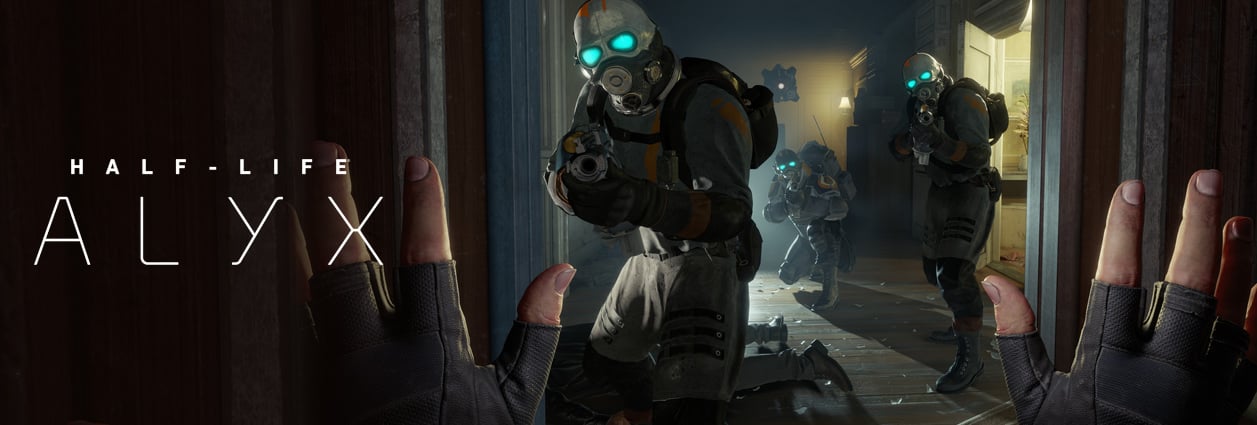Everything That’s Led Up to Half-Life: Alyx
Staff – March 12, 2020 at 10:56 AM
In a Reddit AMA in 2017, Gabe Newell uttered, ominously, “The number 3 must not be said.” It was a characteristically ambiguous answer to a question that’s plagued Newell and his company, Valve, for years. Someone in the AMA wanted to know what the status of Half-Life 3 and Half-Life 2: Episode Three was.
Three years later, Valve has finally issued an answer. The release of Half-Life: Alyx, the VR-exclusive follow-up to Half-Life 2: Episode Two, is just on the horizon, closing the loop on a decade’s worth of in-jokes and memery about Half-Life 3’s absence.
Half-Life: Alyx builds on the company’s history of surpassing their audience’s expectations and refusing to compromise. Notably absent of 3s, Half-Life: Alyx isn’t the continuation of Half-Life’s story that anyone had anticipated — and given Valve’s track record, they’re likely happier for it. In anticipation of its release, we decided to take a look back at the company’s storied history.
The founding of Valve and the beginnings of Half-Life
In 1996, Gabe Newell and Mike Harrington wanted to move mountains. As former Microsoft employees, they had both pocketed enormous amounts of money in stock options. But they weren’t interested in squandering it on luxury purchases; they wanted to change the course of video games.
Newell and Harrington were ardent believers in the 3D FPS genre. Though they were fans of popular, gunplay-driven shooters like DOOM and Quake, they also envisioned a future for the genre that capitalized on its storytelling potential. They dreamt of a game that was defined by its cast of characters rather than its arsenal of weaponry.
At the time, however, they were moving against the current, bracing for resistance from an audience who wanted to shoot first and ask questions later. “We'd occasionally get people who would say things like: 'Stories? Who needs them? I just want a rocket launcher that fires faster,’” Newell said in a GameSpot interview.
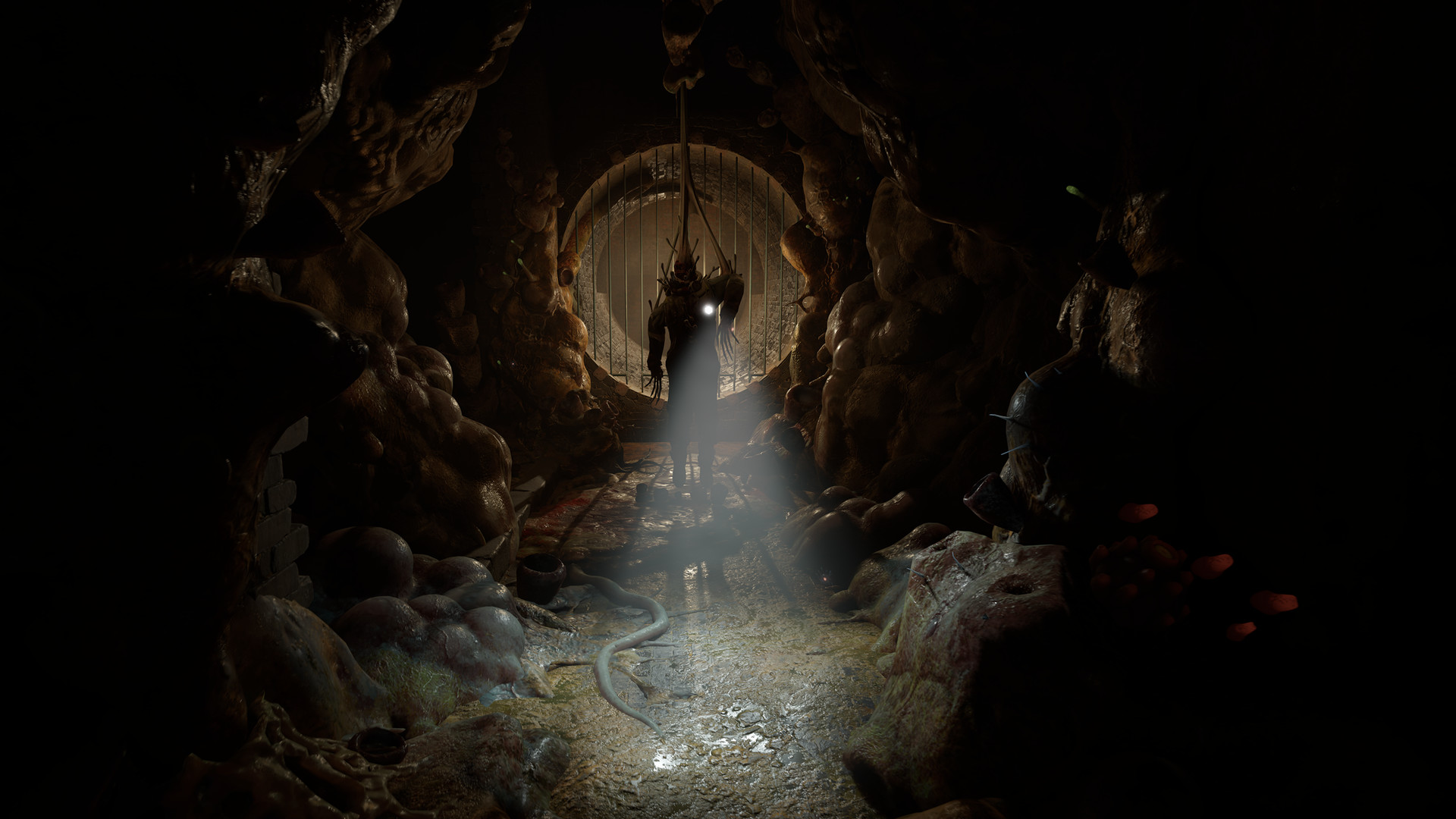
But they were determined to push boundaries. The duo founded Valve, hired a staff, and acquired a license for Quake’s eponymous game engine. They heavily modified the engine and authored new systems in skeletal animation and artificial intelligence.
Inspired by Stephen King’s novel The Mist, Newell conceived of a backdrop for the game’s story that incorporated elements of supernatural horror. They enlisted the help of novelist Marc Laidlaw to flesh out the game’s plot. Determined to doff the ubermensch power fantasies typical of other FPS games, Valve grounded their story in the perspective of an everyday person. In an IGN interview, Newell remarks that he was especially drawn to Freud’s understanding of fear: “the familiar made strange.”
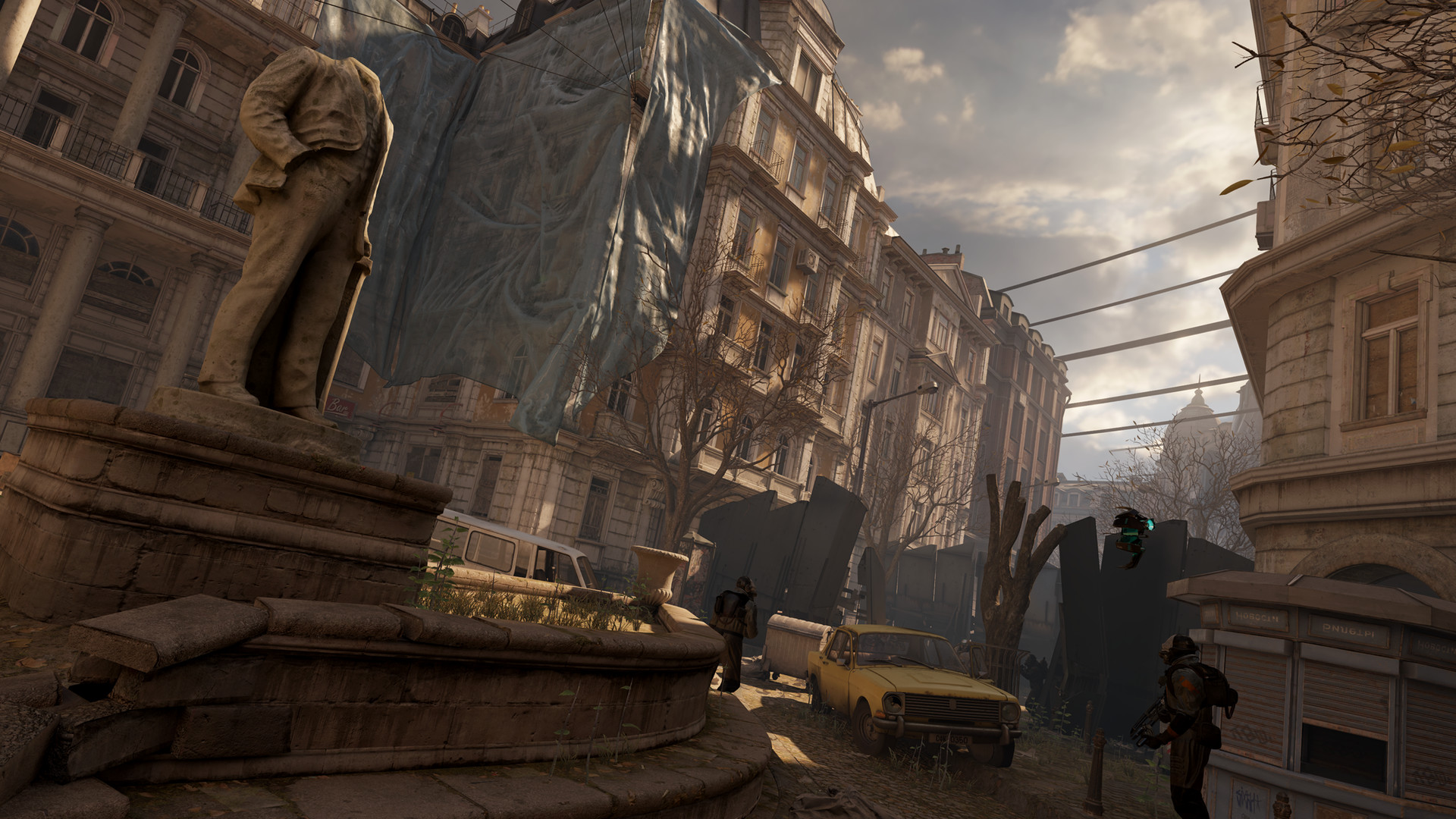
The result was Half-Life, a game that puts you in the shoes of a nobody named Gordon Freeman who, at the start of the game, is already late for work. Hell breaks loose when Freeman, a physicist, accidentally opens a portal to an alien dimension called Xen at the Black Mesa Research Facility.
As Freeman fights his way through the Black Mesa complex, leaving a trail of alien and U.S. Marine corpses in his wake, he actualizes his herodom. He slowly graduates from being an everyperson to becoming the savior of the world. It’s a transformative story that mirrors the player’s own experience getting acquainted with the contours of Half-Life’s dark and mysterious universe.
Half-Life’s release in 1998 put Valve on the map. The mountains had been moved. But they had even bigger ambitions for the game’s sequel.

Valve manipulates gravity itself with Half-Life 2
Unwilling to jeopardize their momentum, Valve began development on Half-Life 2 merely six months after they’d released Half-Life. This time, they set their sights on the world beyond Black Mesa’s walls.
The narrative obtained a cosmic scale. Half-Life 2 takes place years after the events of the first Half-Life and depicts an Earth that has been conquered by an interdimensional empire called the Combine. Subject to an authoritarian police state and prevented from breeding, humans begin to form an underground resistance.
Advancements in facial animation technology afforded Valve’s characters a wider range of emotional expression. Motivated by these developments, Laidlaw opted to introduce more characters with emotionally nuanced relationships to one another, including resistance leader Eli Vance and his daughter, Alyx. "Characters in games don't really have families, but it's this basic dramatic unit everyone understands," Laidlaw said in an interview with GameSpot.
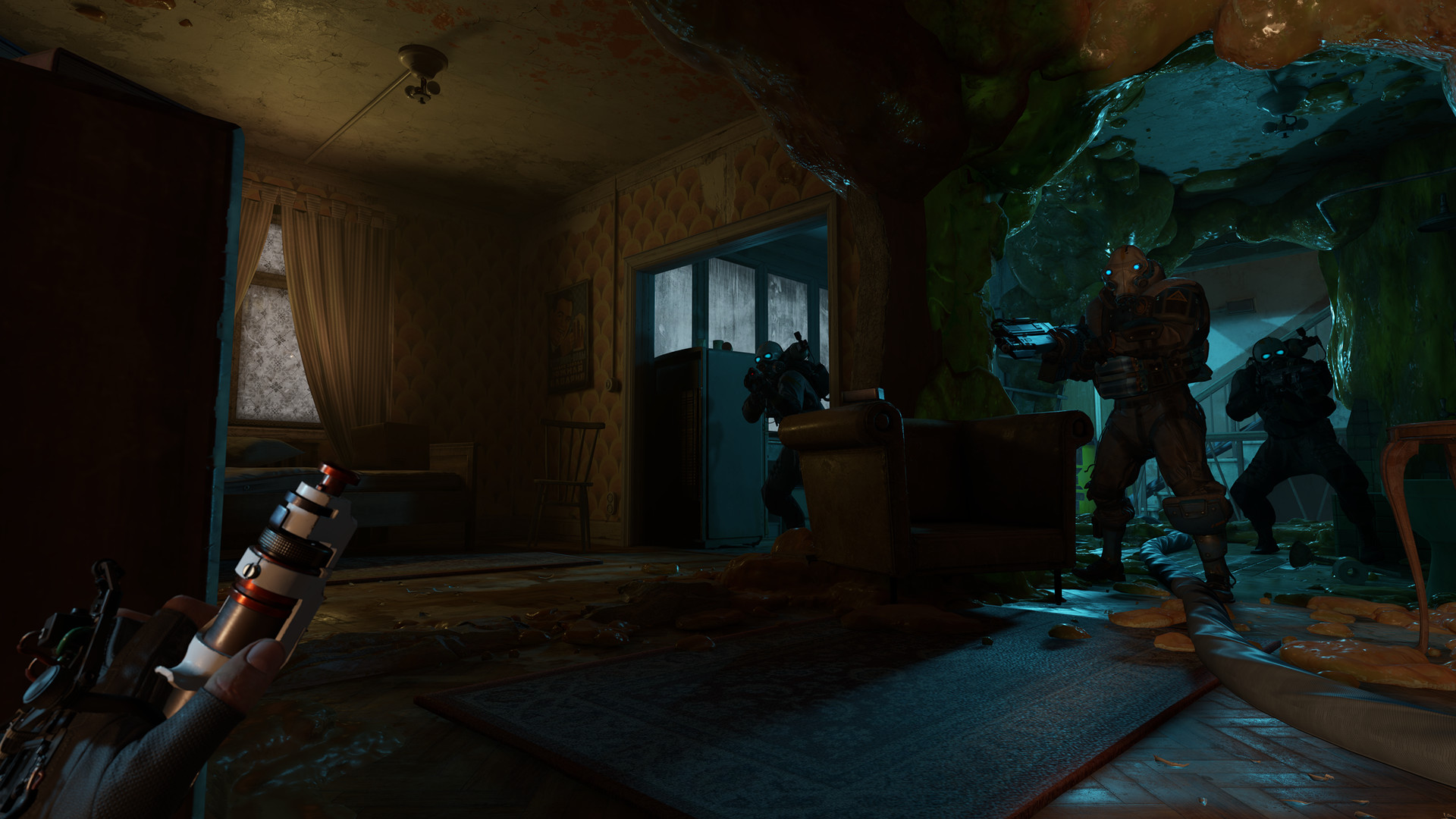
Another of Valve’s major breakthroughs during Half-Life 2’s development — and arguably the game’s most iconic feature — is the gravity gun. Valve’s early experiments with integrating fully simulated physics into Half-Life 2 resulted in a minigame called Zombie Basketball, which tasked the player with using a gun to pick up zombies and toss them through hoops. This idea formed the foundation for the gravity gun, which allows players to manipulate objects in their environment and hurl them across the level.
Such high ambitions weren’t without consequences. Half-Life 2’s release was hampered by turbulent development periods. Morale within the Half-Life 2 team ebbed and flowed as they reached technical milestones but missed gaming convention demos. Their target release date began to crawl further and further away.
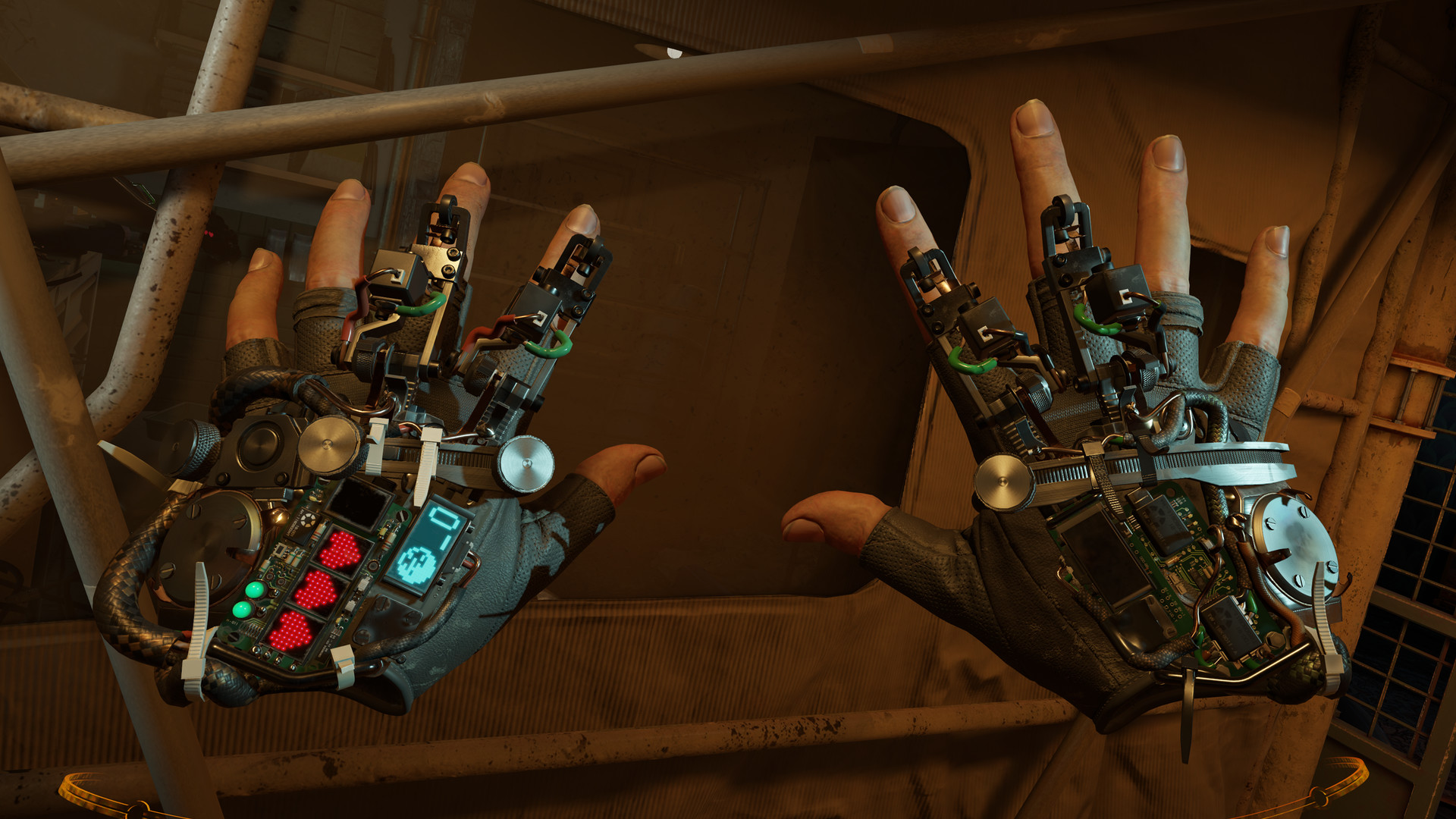
Yet in 2004, Half-Life 2 was finally released — and to widespread critical acclaim. Critics praised the game’s sophisticated animations, robust physics simulation, and advanced AI. While we might take such features for granted today, they were revelations at the time. For many publications, Half-Life 2 wasn’t merely their game of 2004 but their game of the decade.
Then, after Valve released the shorter Half-Life 2 follow-ups Episode One and Episode Two in 2006 and 2007, respectively, the series went dark for nearly 13 years.
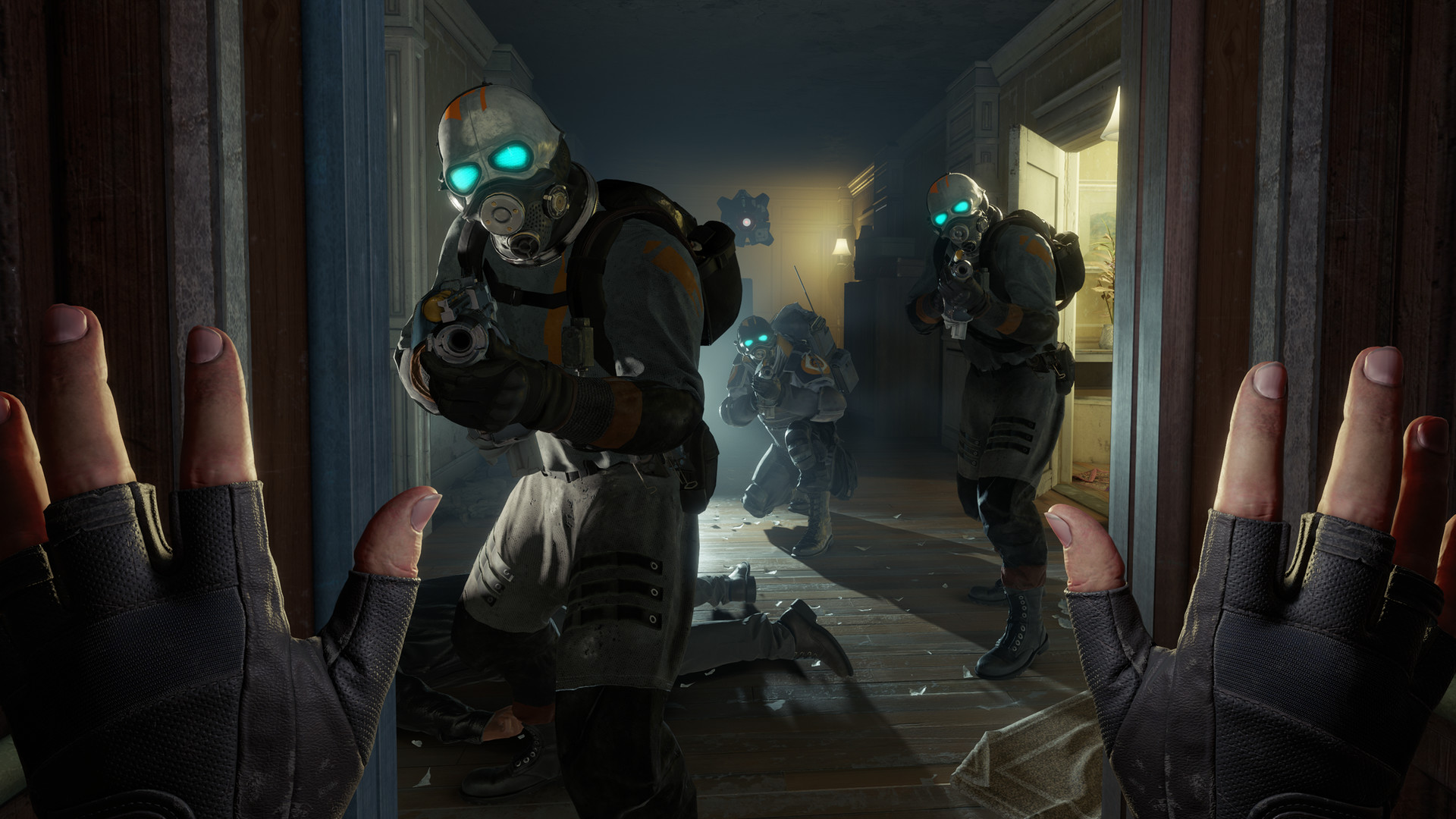
What does this mean for Half-Life: Alyx?
It’s 2020 and Valve finds themselves, once again, on the edge of another breakthrough.
Half-Life: Alyx isn’t the sequel to Half-Life 2 Valve’s fans have anticipated over the past decade; it’s a prequel, set just before the events of Half-Life 2. Instead of playing as Gordon Freeman, players will be Alyx Vance, following her initial struggles against the Combine alongside her father. Instead of a gravity gun, Alyx is armed with a pair of gravity gloves, a detail that acknowledges the series’ past while gesturing towards the future.
No one in 2007 could have predicted that the series’ next entry would be VR-exclusive. Yet Half-Life: Alyx is arriving at an opportune time for the medium. VR shows promise but also possesses so much open possibility, landlocked by uncharted territory. Who better than Valve to venture into the thick of it?
Though fans have been waiting a long time for news about Half-Life, Valve knows that good ideas deserve patience. “I just hate the idea that our games might waste people's time,” Newell said to GameSpot about working on Half-Life 2. “Why spend four years of your life building something that isn't innovative and is basically pointless?”
